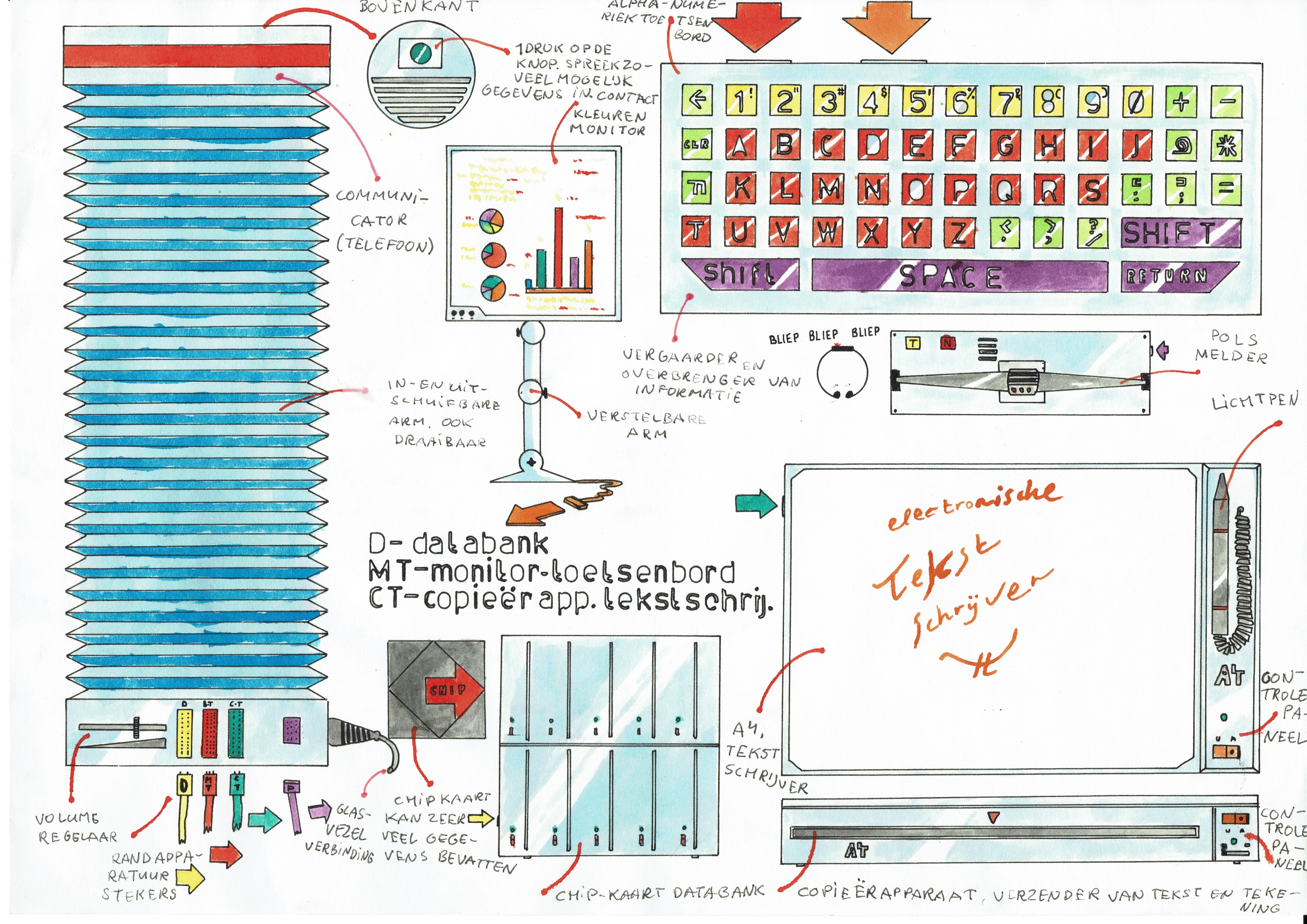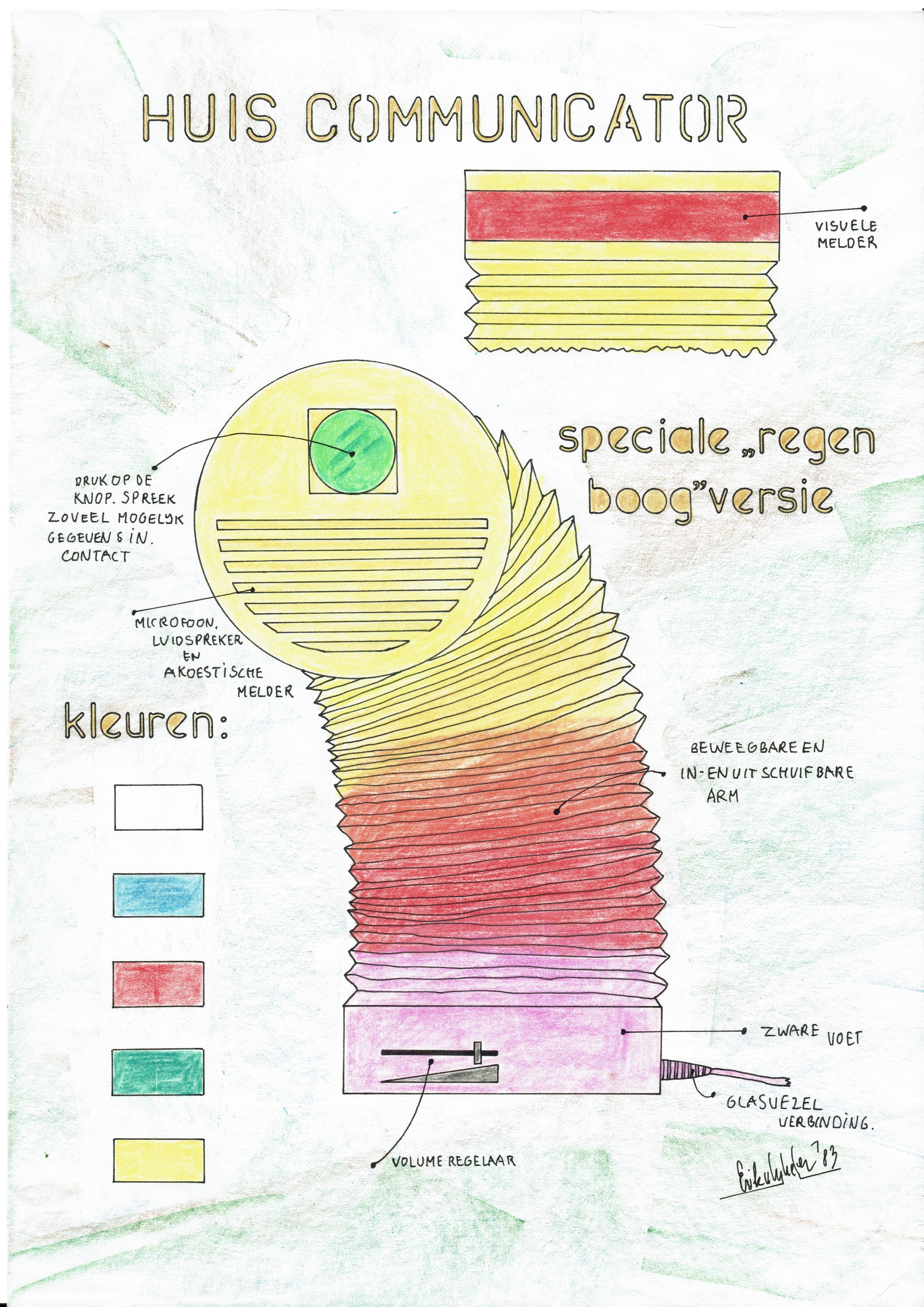2019-09-15 20:56 — By Erik van Eykelen
Teenage Dreams About the Future
As a teenager I was hoping and dreaming about a future full of exciting technology. A while ago I ran into a couple of drawings I made in 1983. The drawings show the technology I was hoping for would become reality. To place the drawings in perspective: I was 15 years old at that time, and my only experience with a computer at that time was a Commodore PET.
A quick recap on 1983: Ronald Reagan was the US president, Lotus 1-2-3 was released, the final episode of MASH aired, IBM released the PC XT, the Space Shuttle Challenger was launched on its first flight, a Korean Air Lines plane was shot down in Soviet airspace, a worldwide nuclear war was averted by Stanislav Petrov, US and French army barracks were bombed, and Amy Winehouse was born.
But back to my drawings. I don’t remember what inspired me to create them. It must have been a mix of stuff I learned by reading Byte Magazine and Communications of the ACM (my dad brought these home from his work), and a desire for better computing hardware than what the 80s had to offer.
Drawing #1
This is the drawing I like best 36 years later.
It depicts:
- A home communication device, much like Alexa, Google Home, or Apple’s HomePod.
- A flat panel color display including a computer (like an iMac).
- An Apple Watch-like device.
- A copier and fax, including a stylus-enabled surface.
- A data storage facility using solid state memory cards.
- A fiber optic connection.

Note: captions are in Dutch
There’s a lot going on so I’ll describe all parts starting from the top left corner going clockwise.
At the left side of the drawing you see this flexible, accordion-like tube. It’s called the “Communicator”. Between brackets it says “telefoon” (phone).
Observations:
- The top (“bovenkant”) sports a large button. The caption says “Press button, speak as much information, [you’ll be put into] contact”. Translated to today: a voice recognition assistant listens, analyses what you said, and tries to put you into contact with the right person.
- The red ring encircling the top of the tube emits light to announce incoming calls.
- The tube is flexible in the sense that it can be made shorter and longer (“in- en uitschuifbaar”), bent, and rotated (“draaibaar”).
- It has a volume control slider.
- It has four color-coded connectors which connect to the display, “databank”, “copier & text hand writing device”, and a fiber optic connection (“glasvezelverbinding”).
Fun fact: the rural village where I live, located in the north of The Netherlands, will finally get a fiber network in 2020.
To the right of the Communicator you see a color display monitor:
- The display has a square aspect ratio. Apparently I liked the aesthetics of it but it hasn’t gained much popularity.
- It looks quite small (15"?) for today’s display sizes but remember that back then most monitors were only around 13".
- It is probably a flat panel monitor. Although it’s not visible on the drawing, the thin, adjustable arm makes it look like the display itself can’t support a heavy cathode ray tube. The arm has three joints to adjust the height and angle of the display.
- Based on the fact that the rest of the drawing does not contain an actual computer-like device, I assume that the display itself contains the computer that drives the display.
Around 1982 the first, small LCD displays were launched measuring a couple of inches. I must have extrapolated this fact to this larger display I envisioned.
To the right of the display is an odd, colorful keyboard.
- It sports a weird, non-QWERTY keyboard.
- It has two ports (display and databank?).
- It has colored keys, something you see on keyboards used by video editors nowadays.
Underneath the keyboard you see a digital watch and what is probably a charging station.
- It can make sound (“bliep” means beep in Dutch) and it has a small red light.
- It looks like the charging station has a speaker. Perhaps I envisioned taking calls while not wearing the watch?
- The word “polsmelder” (wrist notifier) seems to indicate it could vibrate to notify the wearer about an incoming call.
I am not a fan of rectangular clock faces for analog watches but I suspect I gave this watch a rectangular face (with rounded corners though) because most electronic watches had this shape in the 80s.
Below the watch is a rather vague apparatus, called the “electronic text writer”.
- It has a lightpen, a device which was actually in use during the 60-80s era. The pen is attached to the device with a coiled wire.
- The port at the left side (indicated by the green arrow) hints at a connection between the Communicator (left) and this electronic text writer.
- The front shows a narrow, horizontal slit with “A4” printed below. The caption underneath says “Copying device, sender of text and image[s]”. At the right side of the front panel there’s a small “control panel”, featuring an on/off switch, an LED, and another undefined control.
Apparently I’d envisioned that this device should be capable of transmitting handwritten notes, as well as scanned images and texts. Whether the surface on which you had to “write” using the lightpen also acted as a display of (digital) images is unknown, although the orange handwritten words “electronic text writer” seem to hint at a digital display and not only a lightpen-sensitive surface.
To the left of the text writer you see the “databank”:
- The black square-with-red-arrow contains the word “chip”. Underneath it says, translated from Dutch, “chip card able to hold much information”.
- The device itself has 2 x 5 card readers, each reader having small red and green lights.
- The databank can be connected to the other devices using a cable.
Drawing 2
I also drew the Communicator device in “rainbow colors”:

36 years later
I am glad I saved these drawings because it’s fun to see everything I dreamt of became reality, sort of.